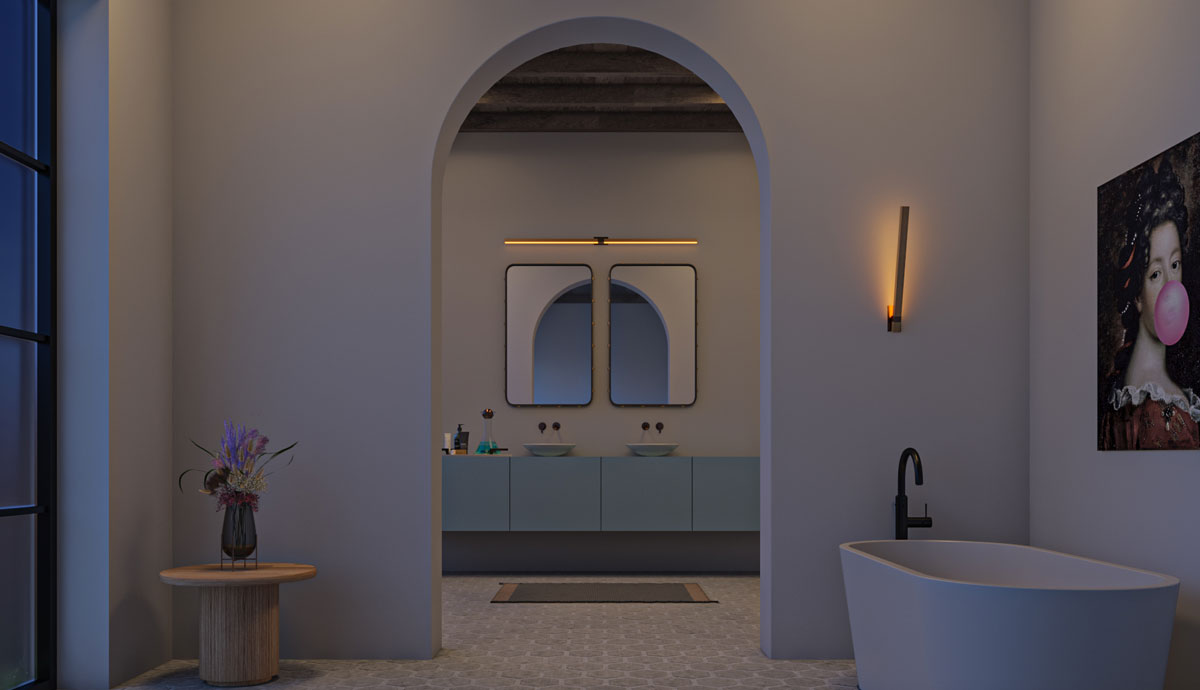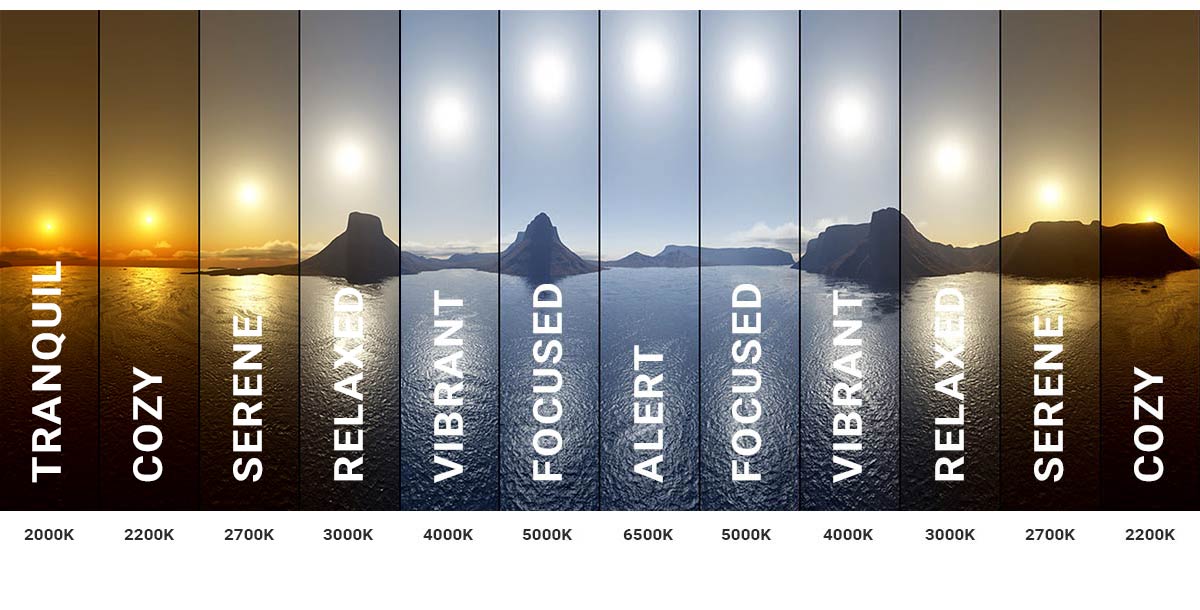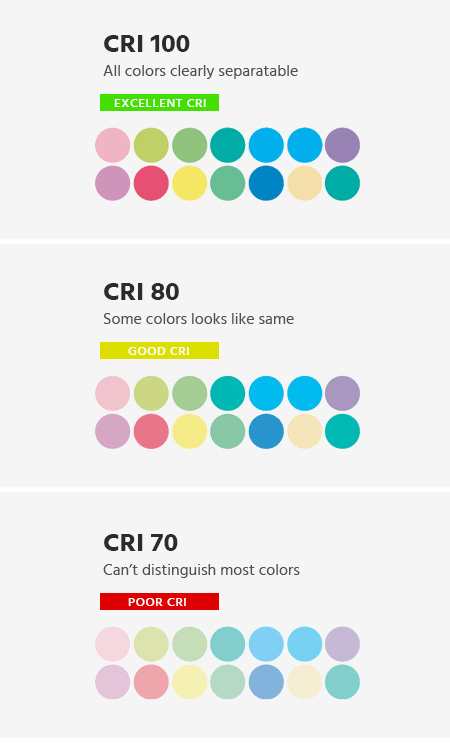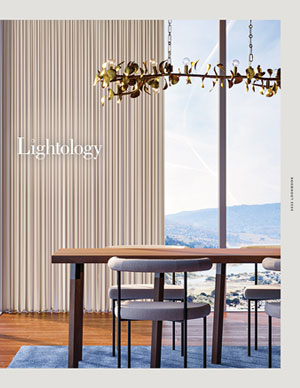- Showroom
- Design Services
- Support Center
- |(866) 954-4489
-
0
Your CartOrder Subtotal0.00
- 0
Warm Dim & Tunable White Technology
LED lighting is the new standard in homes and businesses alike, proving to be versatile, long-lasting and highly efficient. The next evolution in LED technology is here, and it’s all about mood.

Introducing Warm Dim and Tunable White technology. A much needed upgrade to the static LEDs of the past, Warm Dim and Tunable White improve upon color temperature and control, allowing you to bring the right mood to your space and even channel the coveted “golden hour” every photographer seeks.
Standard LEDs can be cold and blue, dimming down to a grey color reminiscent of the sky before a bad storm or – even worse – prison lighting. Science shows us that lumens and color temperature may even be harmful to our health, if exposed during the wrong hours of the day. Warm Dim and Tunable White technology change the LED landscape, giving us more variety and more control. Warm Dim does exactly what it sounds like – dim from cool to warm. Dynamic / Tunable White is an LED system with a variable Kelvin color temperature range from 2000K to 4000K. And that’s only the beginning.
What is Warm Dim
- Dims like an incandescent, from cool to warm
- Color temperature becomes warmer as you dim, from 3000K or 2700K to 1800K
- Perfect for retrofit or remodel; no rewiring
- Mimics incandescent and candlelight
- Great for full home, outdoor, retail and commercial spaces
- $$
What is Tunable White
- Control your color temperature, while maintaining brightness
- Adjust from 4000K to 2000K
- Great for new construction; 4 wires with 2 dimmers or DMX
- Mimics a blazing sunset at full brightness 2000K
- Great for full home, outdoor, retail and commercial spaces
- $$$
The Morpheus Room
The crown jewel of Lightology’s Chicago showroom, the Morpheus Room shows off the latest LED technology, fully integrated with Tunable White controls to showcase the future of lighting.
A Little Science
Color Temperature
An important characteristic of visible light, color temperature is measured in Kelvin and helps describe how warm (red / amber) or cool (blue / white) a light source will be. The lower the color temperature, the warmer the tone. The higher the color temperature, the cooler the tone. The color temperature scale dates back to the 1800s, discovered and invented by physicist William Kelvin. After heating up blocks of carbon, Kelvin noted the color change from red and orange (lower temperature) to white and blue (higher temperature), thus forming the base for the Kelvin Color Temperature Scale as we know it today. When measuring color temperature, we are actually measuring the temperature of an ideal black-body radiator.

Lumens
Perceived as brightness, lumens measure the total quantity of visible light emitted by a source. When a light is attached to a dimmer, you’re adjusting the lumen output. Higher lumens result in brighter light, lower lumens result in dimmer light.
- Lumens
- 2600 lm
- 1600 lm
- 1100 lm
- 800 lm
- 450 lm
- Incandescent Wattage
- 150 W
- 100 W
- 75 W
- 60 W
- 40 W
- LED Wattage
- 25-28 W
- 16-28 W
- 9-13 W
- 8-12 W
- 6-9 W
Color Rendering Index (CRI)
You may notice that some lights make color pop, while others tone it down. This is due to a light sources ability to accurately reveal colors in comparison to an ideal or natural light source -- measured in various spectrums and communicated via the Color Rendering Index (CRI). If a light source has a high CRI, it brings out super saturated colors. If a light source has a low CRI, it may dull or dampen an object’s true colors.

Further Reading

Warm Dim & Tunable White
LED is a rapidly advancing technology that has revolutionized the lighting industry...
Read More
Human-Centric Lighting
How exactly does lighting affect our lives? Why does a sunset help us feel relaxed? Why are we more productive under bright, white light?
Read More
Tunable White
Photographers call it 'the Golden Hour.' For a few fleeting moments each day, the world is bathed in a stunning, ethereal glow that casts a flattering golden light...
Read More






